Senior fitness equipment plays a crucial role in promoting active aging, offering a safe and effective way for seniors to maintain their physical and mental well-being. As we age, our bodies naturally undergo changes, and staying active becomes even more essential for overall health.
Senior fitness equipment is designed specifically to address the unique needs and challenges of older adults, providing a tailored approach to exercise that can help improve strength, balance, flexibility, and cardiovascular health.
From low-impact cardio machines like stationary bikes and ellipticals to strength training equipment designed for safe and effective resistance exercises, senior fitness equipment offers a diverse range of options to meet individual needs and preferences. Additionally, balance trainers and assistive devices are available to help seniors improve their stability and mobility, reducing the risk of falls and promoting independence.
The Importance of Fitness for Seniors: Senior Fitness Equipment
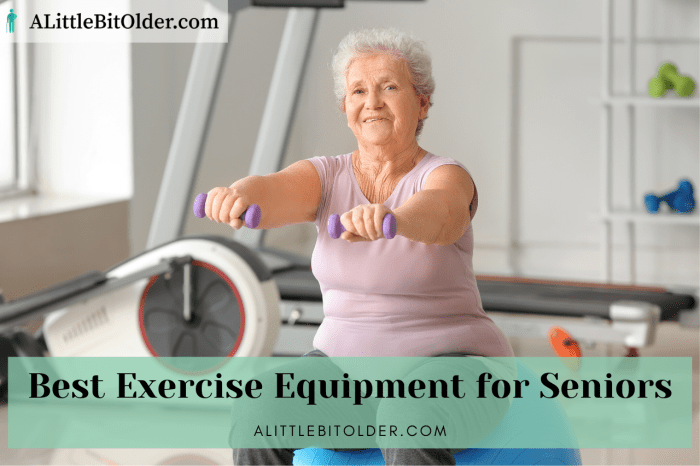
Staying active is crucial for seniors as it significantly impacts their overall well-being. Regular exercise offers numerous benefits, including improved physical and mental health, reduced risk of chronic diseases, and an enhanced quality of life.
Benefits of Exercise for Seniors
Regular exercise provides a wide range of benefits for seniors, contributing to a healthier and happier life.
- Improved Physical Health:Exercise strengthens muscles and bones, improves balance and coordination, and enhances cardiovascular health. It can also help manage weight, reduce the risk of falls, and improve sleep quality.
- Enhanced Mental Health:Exercise releases endorphins, which have mood-boosting effects. It can reduce stress, anxiety, and depression, and improve cognitive function and memory.
- Reduced Risk of Chronic Diseases:Regular physical activity lowers the risk of developing chronic conditions such as heart disease, stroke, type 2 diabetes, and some types of cancer.
- Increased Quality of Life:Exercise can improve energy levels, boost self-esteem, and enhance overall well-being. It allows seniors to maintain independence and participate in activities they enjoy.
Challenges Seniors Face in Maintaining Fitness
While the benefits of exercise are undeniable, seniors often face unique challenges in maintaining fitness.
- Age-Related Muscle Loss:As we age, our bodies naturally lose muscle mass, making it more challenging to maintain strength and mobility.
- Joint Pain:Arthritis and other joint conditions can make exercise painful and difficult. This can limit the types of activities seniors can participate in.
- Limited Mobility:Some seniors may experience limited mobility due to injuries, illnesses, or other health conditions. This can make it challenging to engage in regular exercise.
How Senior Fitness Equipment Can Help
Senior fitness equipment is specifically designed to address the unique needs and challenges of older adults.
- Safe and Effective Exercise:This equipment is designed with safety features that reduce the risk of injury, allowing seniors to exercise comfortably and effectively.
- Low-Impact Options:Many senior fitness machines offer low-impact exercises that are gentle on joints and muscles. This allows seniors with limited mobility to participate in physical activity.
- Adjustable Resistance:Senior fitness equipment often features adjustable resistance levels, allowing individuals to gradually increase their strength and endurance at their own pace.
- Personalized Workouts:Seniors can work with a qualified fitness professional to create a personalized workout plan that addresses their specific needs and goals.
Types of Senior Fitness Equipment
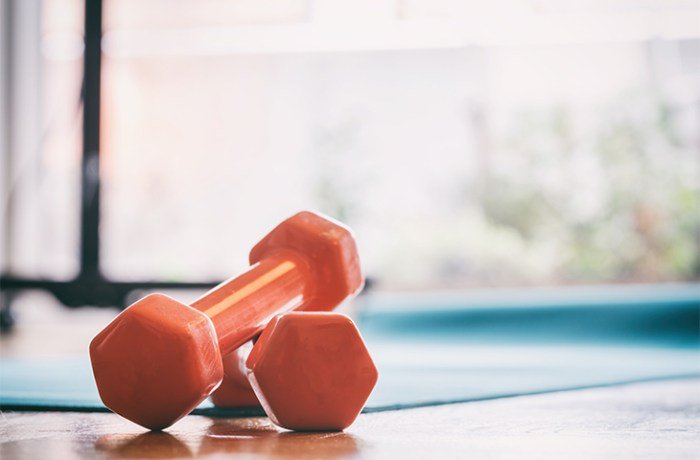
Choosing the right fitness equipment is essential for seniors who want to maintain their health and well-being. Different types of equipment cater to specific fitness goals and needs, allowing individuals to engage in activities that are safe, effective, and enjoyable.
Cardiovascular Equipment
Cardiovascular exercise is crucial for seniors to improve heart health, increase stamina, and enhance overall fitness. Popular cardiovascular equipment options for seniors include:
- Treadmills:Treadmills offer a low-impact way to walk or run, providing adjustable incline and speed settings to suit different fitness levels. They are suitable for individuals with joint pain or limited mobility.
- Elliptical Trainers:Elliptical trainers provide a smooth, low-impact workout that engages multiple muscle groups. They are known for their gentle impact on joints and can be adjusted for different resistance levels.
- Stationary Bikes:Stationary bikes offer a comfortable and convenient way to get a cardiovascular workout. They are particularly beneficial for seniors with balance issues, as they provide a stable and controlled environment.
- Rowing Machines:Rowing machines provide a full-body workout that engages both upper and lower body muscles. They are known for their low-impact nature and can be adjusted for different resistance levels.
Strength Training Machines
Strength training is vital for seniors to maintain muscle mass, improve bone density, and enhance functional strength. Here are some common strength training machines for seniors:
- Weight Machines:Weight machines offer a safe and controlled way to perform strength training exercises. They provide guided movements and adjustable weights, allowing seniors to gradually increase resistance as they get stronger.
- Resistance Bands:Resistance bands are versatile and portable, offering a wide range of exercises that can be performed at home or in a gym. They are lightweight and easy to use, making them ideal for seniors with limited mobility.
- Free Weights:Free weights, such as dumbbells and barbells, allow for a more challenging and dynamic workout. They can be used for a variety of exercises, targeting specific muscle groups and improving overall strength.
Balance Trainers
Maintaining balance is crucial for seniors to prevent falls and maintain independence. Balance trainers help improve balance, coordination, and stability. Popular balance trainers include:
- Balance Boards:Balance boards are designed to challenge balance and coordination. They require users to maintain their stability while shifting their weight on an unstable platform.
- Foam Rollers:Foam rollers can be used for balance exercises by placing one foot on the roller and maintaining balance while shifting weight. They also help improve flexibility and muscle recovery.
- Bosu Balls:Bosu balls are half-sphere balance trainers that challenge balance and coordination. They can be used for a variety of exercises, from simple standing to more advanced movements.
Assistive Devices
Assistive devices can make exercising safer and more accessible for seniors with mobility limitations. These devices can include:
- Walkers:Walkers provide support and stability for seniors with balance issues or weak legs. They can be adjusted in height and come with different features, such as wheels or brakes.
- Canes:Canes offer additional support and balance for seniors who need assistance with walking. They come in various styles and materials, catering to different needs and preferences.
- Handrails:Handrails can be installed in bathrooms, bedrooms, and other areas of the home to provide support and stability during movement. They can be particularly helpful for seniors with balance issues or limited mobility.
Choosing the Right Equipment
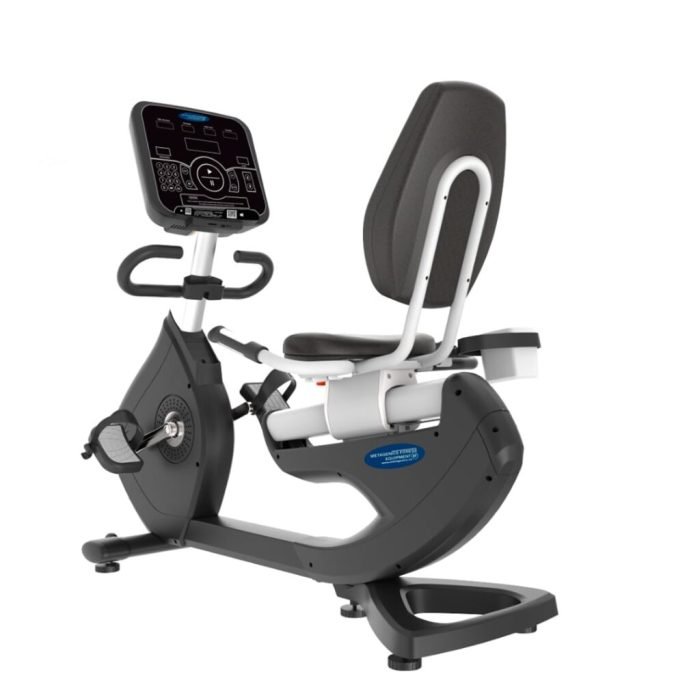
Selecting the right fitness equipment for seniors is crucial for achieving fitness goals safely and effectively. It’s important to consider various factors, including personal needs, physical limitations, budget, and available space.
Factors to Consider When Choosing Senior Fitness Equipment
- Individual Fitness Goals:Determine what you want to achieve through exercise. Are you looking to improve strength, flexibility, balance, or cardiovascular health? Understanding your goals will help you choose equipment that aligns with your objectives.
- Physical Limitations:Consider any physical limitations you may have, such as arthritis, osteoporosis, or mobility issues. Choose equipment that accommodates your limitations and provides a safe and comfortable workout experience.
- Budget:Fitness equipment can range in price, so it’s essential to set a realistic budget. Consider the cost of the equipment itself, as well as any additional expenses like installation, maintenance, and accessories.
- Available Space:Measure the space you have available for equipment. Choose equipment that fits comfortably within your designated area and allows for safe and efficient workouts.
Importance of Consulting with a Healthcare Professional or Certified Fitness Trainer
It’s highly recommended to consult with a healthcare professional or certified fitness trainer before purchasing any senior fitness equipment. They can assess your individual needs, limitations, and fitness goals, providing personalized recommendations and ensuring the equipment you choose is safe and appropriate for you.
They can also provide guidance on proper usage and safety precautions.
Comparing Different Equipment Types
| Equipment Type | Pros | Cons |
|---|---|---|
| Treadmill | Provides a low-impact cardiovascular workout, can be adjusted for different levels of intensity, offers built-in safety features. | Can be expensive, requires significant space, may not be suitable for individuals with balance issues. |
| Elliptical Trainer | Offers a low-impact, full-body workout, provides a smooth and comfortable motion, suitable for individuals with joint pain. | Can be bulky, may not provide the same intensity as other cardio equipment, can be expensive. |
| Stationary Bike | Provides a low-impact cardiovascular workout, easy to adjust for different levels of intensity, can be used indoors year-round. | May not be suitable for individuals with back pain, can be monotonous, can be expensive. |
| Weight Bench | Versatile for various strength training exercises, can be used with dumbbells, barbells, and resistance bands, relatively affordable. | Requires proper form and technique to avoid injury, may not be suitable for individuals with limited mobility. |
| Resistance Bands | Affordable, portable, versatile for various exercises, can be used for strength training and rehabilitation. | May not provide enough resistance for advanced users, can be difficult to maintain proper form. |
Using Senior Fitness Equipment Safely and Effectively
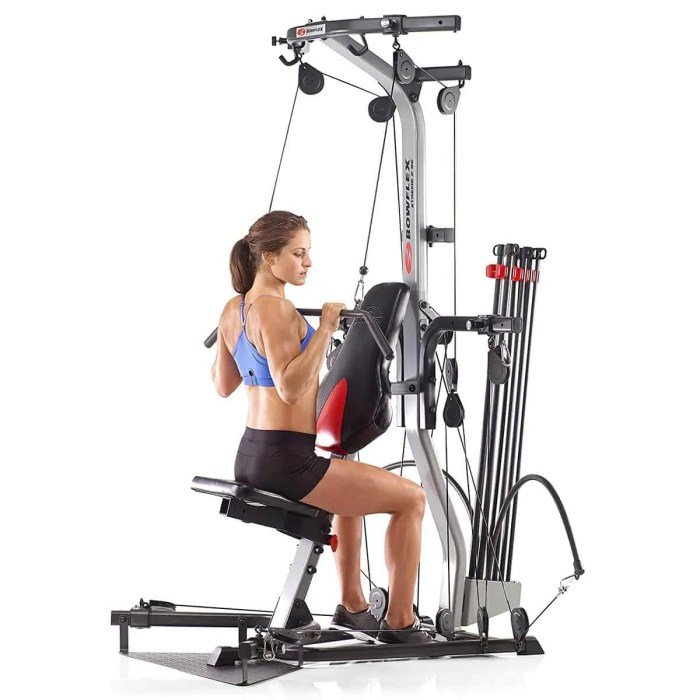
Senior fitness equipment can be a valuable tool for maintaining health and well-being, but it’s essential to use it safely and effectively. This involves understanding proper form, gradually increasing intensity, and paying attention to your body’s signals.
Warm-up and Cool-down Routines
Warm-up and cool-down routines are crucial for preparing your body for exercise and preventing injuries. A warm-up increases blood flow to muscles, improves flexibility, and helps to raise your body temperature. A cool-down helps to reduce muscle soreness and promote recovery.Here are some examples of warm-up exercises:
- Light cardio:Walking, marching in place, or using an elliptical trainer for 5-10 minutes.
- Dynamic stretching:Arm circles, leg swings, torso twists, and hip circles for 5-10 minutes.
Cool-down exercises include:
- Light cardio:Continue your chosen activity at a lower intensity for 5-10 minutes.
- Static stretching:Hold each stretch for 15-30 seconds.
Appropriate Exercises for Different Equipment Types
The type of exercise you do will depend on the specific equipment you’re using. Here are some examples of appropriate exercises for common senior fitness equipment:
Treadmill
- Walking:Start with a slow pace and gradually increase your speed and incline as you get stronger.
- Running:If you’re comfortable running, start with short intervals and gradually increase the duration.
- Interval training:Alternate between high-intensity bursts and low-intensity recovery periods.
Elliptical Trainer
- Low-impact cardio:Elliptical trainers provide a low-impact workout that is easy on your joints.
- Varying resistance:Adjust the resistance level to challenge yourself as you get stronger.
- Upper body workout:Use the handles to engage your upper body muscles.
Stationary Bike
- Cardiovascular fitness:Stationary bikes are excellent for improving cardiovascular health.
- Varying resistance:Adjust the resistance level to challenge yourself as you get stronger.
- Low-impact workout:Stationary bikes are easy on your joints.
Weight Machines
- Strength training:Weight machines can help you build muscle mass and strength.
- Focus on proper form:Use proper form to avoid injuries.
- Gradual progression:Start with lighter weights and gradually increase the weight as you get stronger.
Incorporating Senior Fitness Equipment into an Exercise Program
To effectively incorporate senior fitness equipment into your exercise program, follow these steps:
- Consult with your doctor:Talk to your doctor before starting any new exercise program, especially if you have any underlying health conditions.
- Start slowly:Begin with short workouts and gradually increase the duration and intensity as you get stronger.
- Listen to your body:If you experience pain, stop the exercise and consult with your doctor.
- Focus on proper form:Use proper form to avoid injuries and get the most out of your workouts.
- Set realistic goals:Set achievable goals and celebrate your progress along the way.
- Stay hydrated:Drink plenty of water before, during, and after your workouts.
- Find a workout buddy:Having a workout buddy can help you stay motivated and accountable.
Frequency, Duration, and Intensity Recommendations
The frequency, duration, and intensity of your workouts will depend on your fitness level and goals. However, a general guideline is to aim for at least 30 minutes of moderate-intensity exercise most days of the week. Moderate-intensity exercise is defined as an activity that makes you breathe harder and your heart beat faster, but you can still hold a conversation.
Example:If you’re new to exercise, start with two 15-minute sessions per week and gradually increase the frequency and duration.
Senior Fitness Equipment in Different Settings
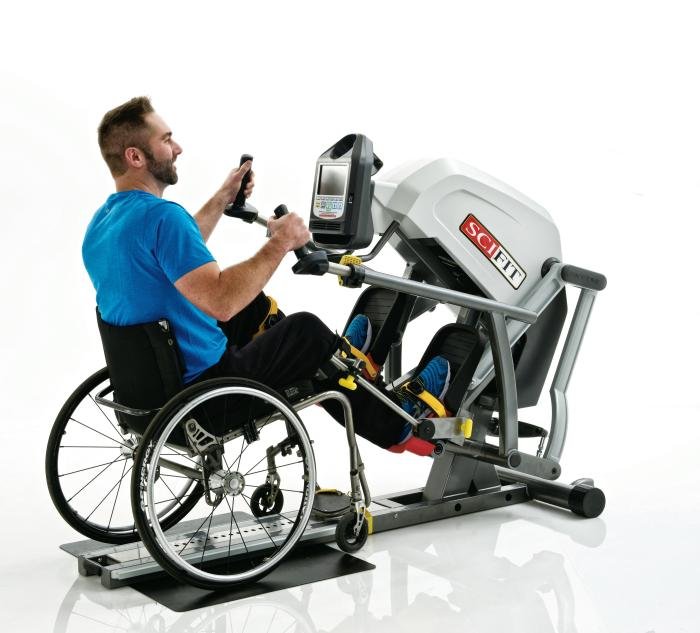
Senior fitness equipment is readily available in a variety of settings, catering to the diverse needs and preferences of older adults. Each setting presents unique benefits and challenges, influencing the choice of equipment and the level of support provided.
Home, Senior fitness equipment
Home-based fitness offers convenience and privacy, allowing seniors to exercise at their own pace and on their own schedule.
- Benefits:Home-based fitness provides flexibility, comfort, and accessibility, enabling seniors to exercise whenever they feel most comfortable. It also eliminates the need for transportation and allows for personalized workouts tailored to individual needs and preferences.
- Challenges:Home-based fitness requires self-motivation and discipline, as there is no structured environment or professional guidance. Access to a wide range of equipment can be limited, and the risk of injury is higher without proper supervision.
- Common Equipment:Home-based senior fitness equipment includes:
- Resistance Bands:Affordable and versatile, resistance bands provide a gentle workout for various muscle groups, improving strength and flexibility.
- Exercise Balls:Enhance balance, coordination, and core strength, while promoting flexibility and range of motion.
- Walking Sticks:Improve balance and stability, reducing the risk of falls, particularly for individuals with mobility issues.
- Light Dumbbells:Increase muscle mass and strength, improving overall fitness and bone density.
Community Centers
Community centers offer a social and supportive environment for seniors to engage in fitness activities.
Senior fitness equipment is designed to cater to the specific needs of older adults, often focusing on low-impact exercises and strength training. One popular brand, crush fitness , offers a range of equipment specifically tailored for seniors, featuring adjustable resistance levels and ergonomic designs to promote safe and effective workouts.
This ensures that individuals of all ages can benefit from a comprehensive fitness routine, regardless of their physical limitations.
- Benefits:Community centers provide access to a wider range of equipment, group fitness classes, and professional guidance from certified instructors. The social aspect encourages motivation and accountability, fostering a sense of community and camaraderie.
- Challenges:Community centers may have limited hours of operation and may not always cater to specific needs or preferences. Accessibility can be a challenge for individuals with limited mobility or transportation options.
- Common Equipment:Community centers typically offer:
- Treadmills:Improve cardiovascular health and endurance, while providing a low-impact workout.
- Elliptical Trainers:Offer a full-body workout, engaging multiple muscle groups with minimal joint impact.
- Stationary Bikes:Improve cardiovascular fitness and lower body strength, providing a comfortable and adjustable workout.
- Weight Machines:Target specific muscle groups, promoting strength and muscle mass development.
Senior Living Facilities
Senior living facilities often incorporate fitness centers as part of their amenities, providing residents with convenient access to exercise opportunities.
- Benefits:Senior living facilities offer tailored fitness programs designed specifically for older adults, taking into account their physical limitations and health conditions. Professional guidance and support are readily available, ensuring safety and effectiveness.
- Challenges:Access to equipment and programs may be limited based on the facility’s size and resources. The cost of living in a senior living facility can be a significant barrier for some individuals.
- Common Equipment:Senior living facilities typically include:
- Recumbent Bikes:Provide a comfortable and low-impact workout, ideal for individuals with back or knee issues.
- Upper Body Ergometers:Target upper body strength and endurance, suitable for individuals with limited lower body mobility.
- Balance Trainers:Improve balance and coordination, reducing the risk of falls.
- Adaptive Exercise Equipment:Designed to accommodate specific needs and disabilities, promoting accessibility and inclusivity.
Hospitals
Hospitals may offer rehabilitation programs incorporating fitness equipment as part of their patient recovery process.
- Benefits:Hospital-based fitness programs provide supervised exercise tailored to individual needs and recovery goals. Physical therapists and other healthcare professionals guide patients through safe and effective exercises, promoting functional recovery and preventing further complications.
- Challenges:Access to hospital-based fitness programs is limited to patients undergoing treatment or rehabilitation. The focus is on recovery and functional improvement, rather than general fitness.
- Common Equipment:Hospital rehabilitation programs typically use:
- Parallel Bars:Support balance and mobility, aiding in walking and gait training.
- Resistance Bands:Enhance muscle strength and flexibility, facilitating functional movement.
- Balance Boards:Improve balance and coordination, promoting stability and reducing the risk of falls.
- Adaptive Exercise Equipment:Cater to specific needs and disabilities, enabling patients to engage in tailored exercises.
The Future of Senior Fitness Equipment
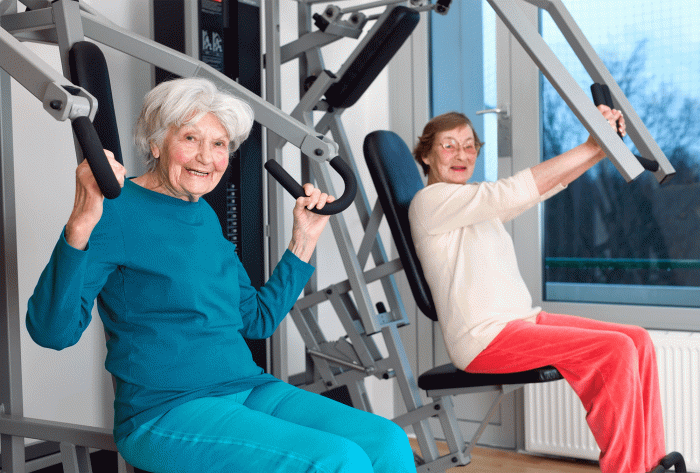
The senior fitness equipment market is evolving rapidly, driven by technological advancements and an increasing focus on personalized fitness solutions. These developments are paving the way for a future where seniors can access innovative and engaging fitness experiences that cater to their unique needs and preferences.
Technological Advancements
Technological advancements are transforming the landscape of senior fitness equipment, making it more accessible, engaging, and effective.
- Smart Equipment:Smart fitness equipment is equipped with sensors and connectivity features that track progress, provide real-time feedback, and personalize workouts. For example, treadmills can adjust incline and speed based on user performance, while resistance training machines can provide personalized guidance and feedback.
Senior fitness equipment can be a great way to stay active and maintain your health as you age. Finding the right equipment can be tricky, but the iu health teams portal may offer helpful information and resources to guide you in your search.
Once you have the right equipment, you can enjoy a variety of exercises designed specifically for seniors, promoting strength, flexibility, and balance.
- Virtual Reality (VR):VR technology is emerging as a powerful tool for enhancing senior fitness experiences. VR-enabled fitness programs can create immersive environments that simulate real-world scenarios, making exercise more engaging and enjoyable. For instance, seniors can virtually explore scenic trails, participate in group fitness classes, or play interactive games, all while getting a great workout.
Senior fitness equipment can be a great way to stay active and healthy as we age. Many community health centers, like the Bedford Stuyvesant Family Health Center , offer programs and resources to help seniors find the right equipment and support.
Whether you’re looking for a stationary bike, a treadmill, or weights, there are options available to suit your needs and fitness level.
- Artificial Intelligence (AI):AI is playing a crucial role in developing personalized fitness solutions for seniors. AI-powered fitness apps can analyze user data, such as fitness level, goals, and preferences, to create customized workout plans and provide personalized coaching. These apps can also monitor progress and provide motivational support, ensuring seniors stay engaged and on track.
Innovative Designs
The design of senior fitness equipment is constantly evolving to address the specific needs of older adults.
- Ergonomic Design:Senior fitness equipment is being designed with ergonomics in mind, prioritizing comfort, stability, and ease of use. For example, exercise bikes are now available with adjustable seats and handlebars, while ellipticals feature wider platforms for better balance and stability.
- Accessibility Features:Senior fitness equipment is increasingly incorporating accessibility features to make it easier for individuals with mobility limitations to participate in physical activity. These features include adjustable height settings, grab bars, and low-impact options. For example, some treadmills feature ramps for easier entry and exit, while stationary bikes are available with step-through frames for greater accessibility.
- Multi-Functional Equipment:Multi-functional fitness equipment is gaining popularity among seniors, as it allows for a variety of exercises in a single machine. This type of equipment is space-saving and cost-effective, making it an ideal choice for home gyms or small fitness facilities.
Personalized Fitness Solutions
The future of senior fitness equipment is centered around personalized fitness solutions that cater to the unique needs and preferences of each individual.
- Tailored Workout Plans:Personalized fitness programs can be tailored to individual fitness levels, goals, and health conditions. These programs can be created using wearable technology, AI-powered apps, or consultations with certified fitness professionals. By customizing workouts, seniors can achieve their fitness goals safely and effectively.
- Remote Monitoring and Support:Remote monitoring and support systems are becoming increasingly common in senior fitness. These systems allow seniors to track their progress, receive personalized feedback, and connect with fitness professionals virtually. This provides ongoing support and motivation, helping seniors stay engaged and on track with their fitness journey.
- Interactive Fitness Experiences:Interactive fitness experiences are becoming more popular, making exercise more engaging and enjoyable for seniors. These experiences can involve virtual reality, gaming, or social interaction, making exercise more fun and motivating.
Last Word

By incorporating senior fitness equipment into their routines, seniors can experience a multitude of benefits, including increased energy levels, improved sleep quality, reduced risk of chronic diseases, and enhanced cognitive function. The key is to choose equipment that is appropriate for individual fitness levels, physical limitations, and goals.
With proper guidance and a personalized approach, senior fitness equipment can empower seniors to live healthier, happier, and more fulfilling lives.
FAQ Overview
What are some examples of senior fitness equipment?
Common examples include stationary bikes, ellipticals, treadmills, weight machines, resistance bands, balance trainers, and assistive devices like walkers and canes.
Where can I find senior fitness equipment?
Senior fitness equipment is available in various settings, including home gyms, community centers, senior living facilities, hospitals, and fitness studios specializing in senior fitness.
How do I know if senior fitness equipment is right for me?
It’s best to consult with your doctor or a certified fitness trainer to determine the most suitable equipment based on your individual health conditions, fitness goals, and physical limitations.
Is it safe for seniors to use fitness equipment?
Yes, senior fitness equipment is designed with safety in mind. However, it’s crucial to start slowly, use proper form, and listen to your body. Always consult with a healthcare professional before starting any new exercise program.